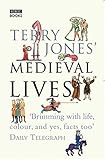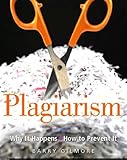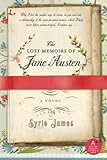 Terry Jones is perhaps best known as one of the members of the British comedy troupe Monty Python. Anyone who has followed his career since his Python days knows that he has become a respected medievalist, something my Medieval Literature professor told us one day in discussing Chaucer’s Knight. Jones’s Medieval Lives may be seen as a companion to the series of the same name.
Terry Jones is perhaps best known as one of the members of the British comedy troupe Monty Python. Anyone who has followed his career since his Python days knows that he has become a respected medievalist, something my Medieval Literature professor told us one day in discussing Chaucer’s Knight. Jones’s Medieval Lives may be seen as a companion to the series of the same name.
The book is broken down into eight chapters the explore the lives of people of different classes and occupations, sweeping away the glorification given to some (knights) and undue pity given to others (peasant). It’s a refreshing exploration of what medieval life was really like with the most intense focus on medieval life in England, which is clearly Jones’s background. The eight groups Jones explores in this book are peasants, minstrels, outlaws, monks, philosophers, knights, damsels, and kings. My favorite chapter on kings discusses incorrect perceptions and propaganda surrounding medieval English kings and is brilliantly constructed around analysis of the three Richards:
Kings of England can be divided into three types: the Good, the Bad and the Ugly. That, you can take it from us, is a reliable fact… Take all the kings of England called Richard: there’s Good King Richard I—Richard the Lionheart, the idealistic crusader and champion of England—or was he? Bad King Richard II— the vain, megalomaniac tyrant—or has his name been traduced by those who wished him ill? And Ugly King Richard III—the deformed monster of Shakespeare’s imagination—or is he nothing more than that: the product of our greatest playwright’s imagination? (“King,” location 3040)
Jones’s explanation of why Good King Richard the Lionheart was a terrible English king, why Richard II was a fairly good king, and Richard III not at all Shakespeare’s villainous tyrant made for interesting reading, though as an anglophile with a bizarre fascination for the British monarchy, much of it was not new to me.
I also enjoyed Jones’s deconstruction of the knight in the Middle Ages, particularly my favorite William Marshal. I liked Jones’s description of the value of knighthood, perfectly encapsulated by the English defeat of the French at Agincourt: “The flower of French chivalry was cut down by archers on sixpence a day” (“Knight,” location 2523). So much for the French assumption that the English would face them on horseback like proper knights!
Jones’s chapter on damsels gives the lie to the old saw that medieval women were powerless and in constant need of rescue. I was particularly interested in Jones’s discussion of the evolution of the Lady of Shalott:
In the original story the lady was not weak and helpless at all, and she was not under any curse. Nor was she passive and pathetic. She was a wilful, stubborn woman who boldly declared her passionate love for Lancelot. Her tragedy was that it was not returned. (“Damsel,” location 2755).
Later, Tennyson would describe her plight differently:
The story of the Lady of Shalott created an extraordinarily resonant echo in the Victorian and Edwardian imagination; Pre-Raphaelite artists, looking for images that expressed what they saw as a truly medieval perspective, returned to it time and time again… It is an image of womanhood as essentially confined and restricted; full participation in the world is forbidden and fatal. This is sentimentally regretted, but tragically unalterable. (“Damsel,” location 2748-2753).
The entire book is worthy of quotes, and I highlighted and annotated it more heavily than any other book I’ve read on my Kindle. Suffice it to say it’s as entertaining and funny as one would expect from a member of Monty Python and informative and educational enough that you’ll learn quite a lot of history as you read. I highly recommend it. As Jones says in my favorite quote in the book, “History consists of the tales we like to tell each other about our predecessors” (“King,” location 3046). If you’ve ever wondered what “tales” you’ve been told about medieval people, pick up this book.
Rating:




















